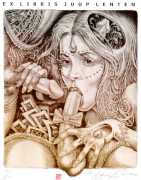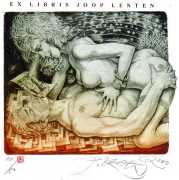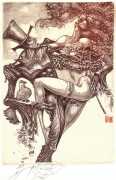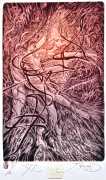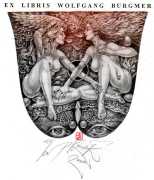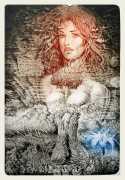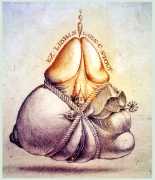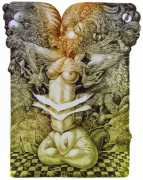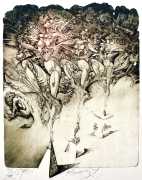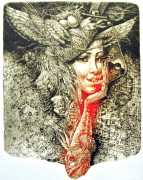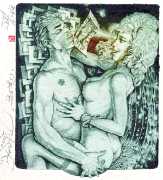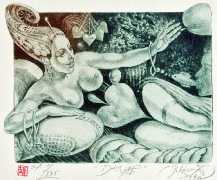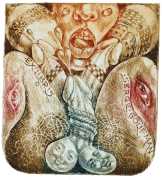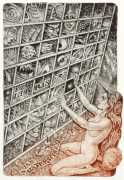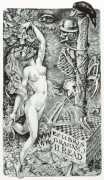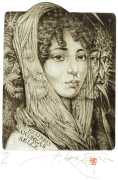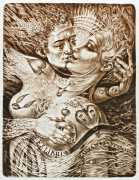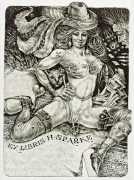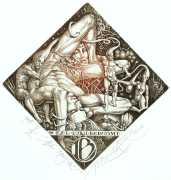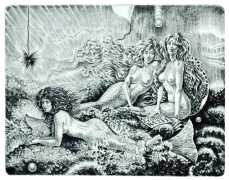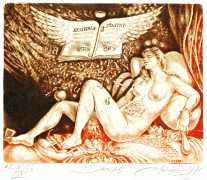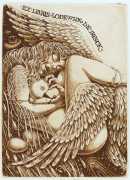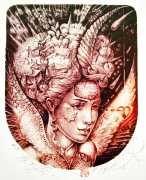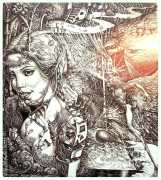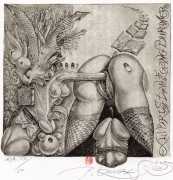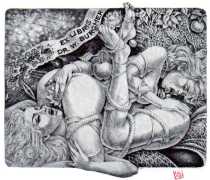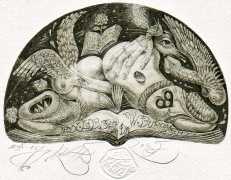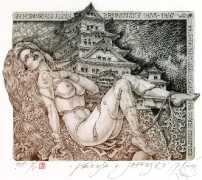Peter Kocák is not only a well-known engraver of ex libris; he also collects and displays examples of Chinese and Japanese ex libris and calligraphy. His ex libris and related engravings have been exhibited all over the world, including Korea, Japan and China, Poland, Italy and Spain, Argentina and the USA, and he has won numerous awards.
The first known bookplates or ex libris – a Latin phrase meaning ‘from the library of’ – are woodcuts from the fifteenth century, displaying the owner’s name and coat of arms. Through the centuries ex libris designers came up with ever more artful and imaginative designs for their clients’ libraries, inspiring a mania for collecting bookplates which lasted from the final quarter of the nineteenth century until the 1930s.
Today ex libris are once again in demand, eagerly sought by specialised collectors, and there are websites, fairs and exhibitions dedicated to the artform. Many plates are now produced as signed and numbered small format fine art prints, known as ‘free’ ex libris, never intended to be glued inside books but instead to be framed and displayed in the library of the client fortunate enough to be able to afford to commission it. In recent years there has been a definite trend towards erotic subjects for bookplates, partly a throwback to the 1920s and 30s and partly to explore the potential of engraving techniques.
Peter Kocák’s erotic bookplates are full of symbolism and classical allusion, often using body parts – especially sexual parts – in imaginative and original juxtaposition.


